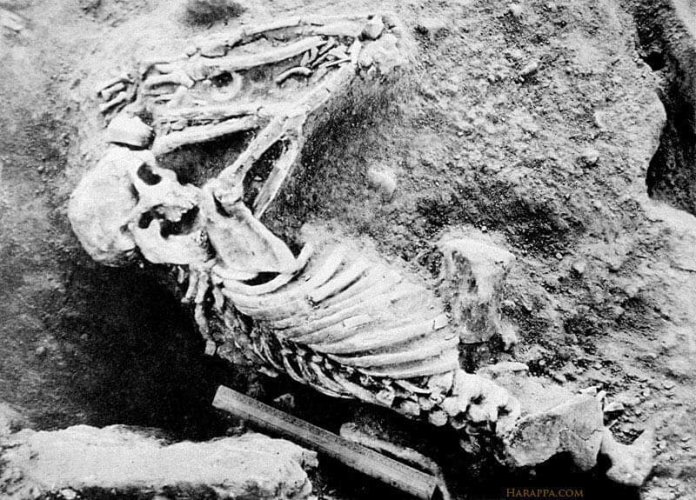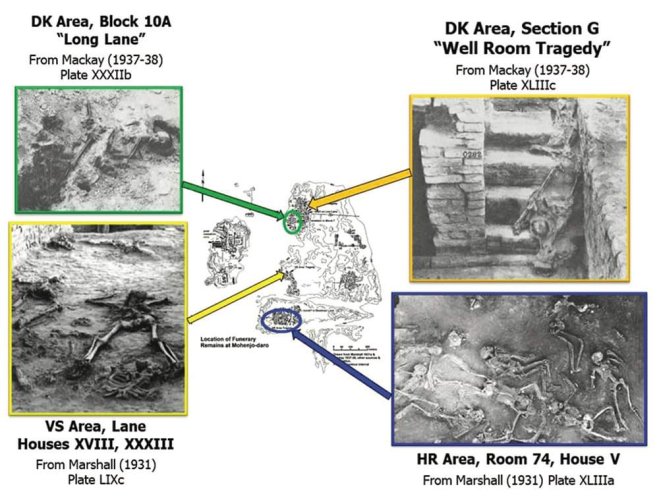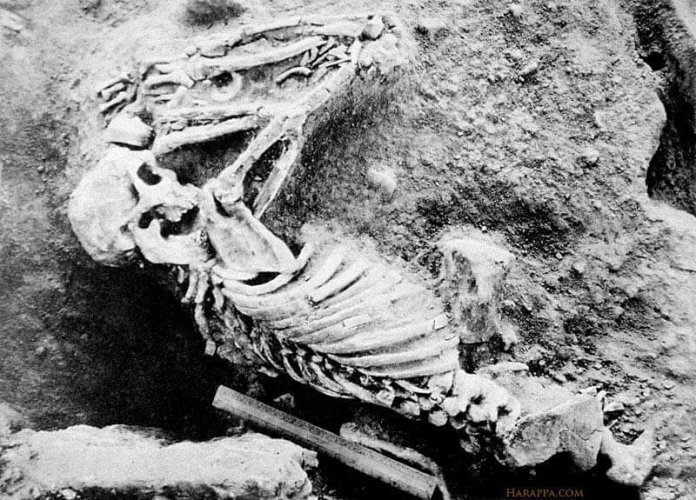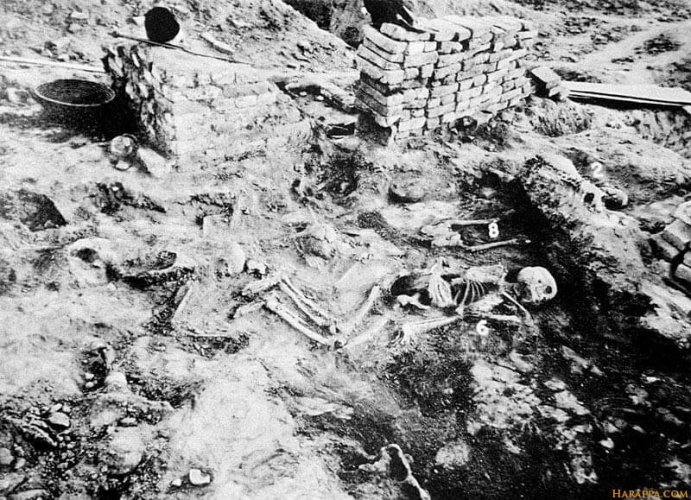
A Craniometric Investigation by Brian E. Hemphill is a 40 page paper that presents an in-depth analysis aiming to elucidate the biological affiliations of individuals found in atypical burial contexts at Mohenjo-daro through craniometric studies. This is murky stuff - craniometric studies or "the measurement of the skull and facial structure" - because such studies have long been discredited for their links to racism and prejudice in centuries past. Murky also because it is hard to deduce too much from them, especially since even if there is enough data from so far back, how does one account for the potential for convergent evolution or the possibility that craniometric similarities might not directly indicate cultural or genetic kinship?
The conclusion is not unexpected: "this [data] plot indicates that the so-called ‘massacre victims’ of Mohenjo-daro likely represent the remains of squatter populations from the west who interred their dead in the decrepit remains of this ancient city. No evidence supports the notion that these remains are those of ‘Aryan Invaders’ from the steppes of Central Asia or the hapless Mature Phase or Late Harappan residents of Mohenjo-daro" (p. 210). Still, the paper is valuable for some of the ancillary and related points raised and discussed. Like much research in recent times, it also suggests once again that populations thousands of years ago were very much in touch and circulating amongst each other. Exchange of ideas, products and genes was essential to the rise of civilization, in all directions.
One reason that the "identity" of the "massacre victims" is interesting is its relationship, possibly, to the decline of Indus civilization. The evidence is summarized by Hemphill: "During the course of excavations in the Lower Town by Marshall (1931) and Mackay (1938), skeletal remains were uncovered in non-mortuary contexts. Among others, these included one skeleton in Deadman’s Lane in Section A of the HR area, nine individuals from Block 10A in the in the DK Area, two from Section G in this same area, as well as six individuals (including one child) from Lane 4 separating Houses XVIII and XXXIII in the VS area and, most famous of all, some 14 individuals encompassing 13 adult males and females and one child in Room 74 of House V in the HR Area [see above images]" (p. 211-12). Early excavators had different explanations, and were rather circumspect, with Mackay suggesting they could have been raiding mountain tribes. It was Wheeler who made the famous statement (1947) that they were possible evidence of an "Aryan invasion," which he related to the Rg Veda and concluded with the famous lines: "It may be no mere chance that at a late period of Mohenjo-daro men, women and children appear to have been massacred there (Mackay 1938: 94–95, 116–117, 172). On circumstantial evidence, Indra stands accused" (Wheeler, 1947: 82, quoted on p. 212). Dr. George Dales offered a refutation of Wheeler's supposition in 1964, reiterating that the skeletons, their positions and relationship to the grounds they were found in "were not massacre victims at all, but likely represented the remains of bandits from the Baluchistan hills who left their dead in the long-abandoned city" (p. 213).
Cont. and paper at https://www.harappa.com/content/who-were-‘massacre-victims’-mohenjo-daro-craniometric-investigation



